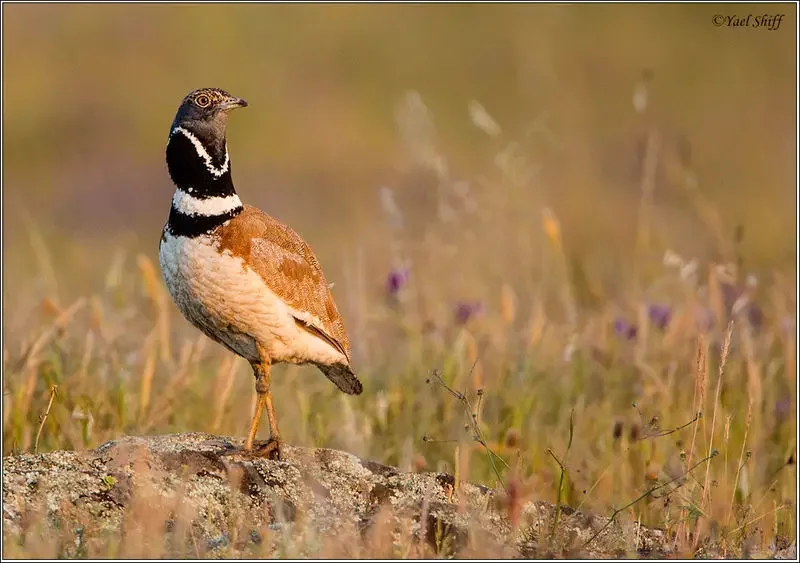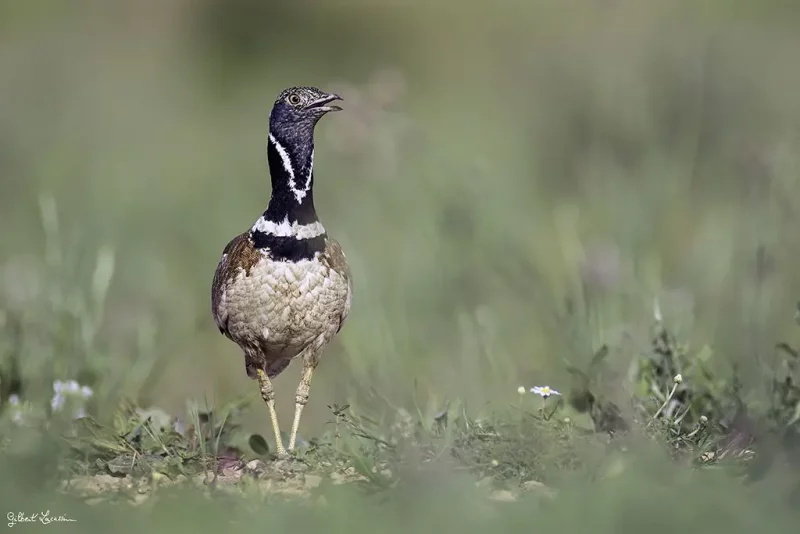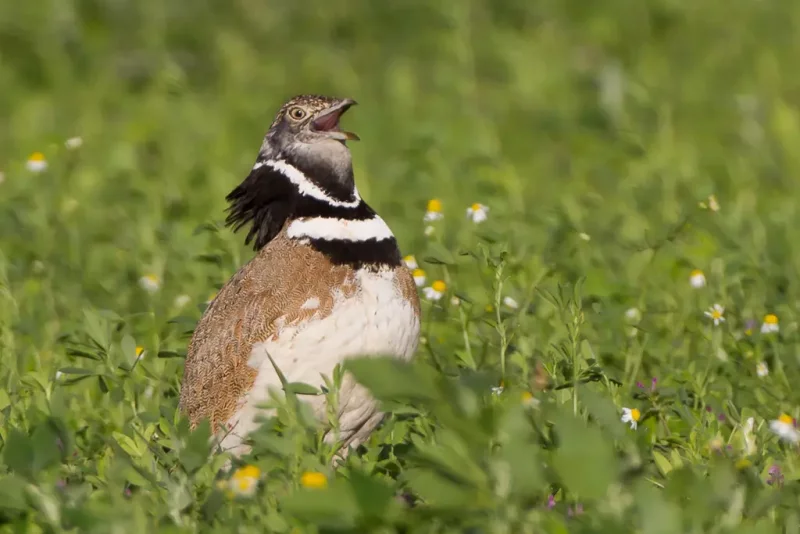Why is rehabilitating the little bustard populations in the St-Chaptes plain necessary?
The little bustard is settled in the Mediterranean region. The species widely winters in the Crau plain (Bouches-du-Rhône, Costières du Gard and the Vidourle plain), where low crops (plough, seedbed, paths, market gardening, grubbed up vine) coexist with meadow shelters (alfalfa stands, hayfields).
These preferred shelters provide at the same time protection and high food supplies (mainly insects) for the females, while the males, who must remain in the females’ sight, select shelters with low vegetation levels. These contrasting requirements are even more visible in the plains farmed using different mosaic crop rotations.


